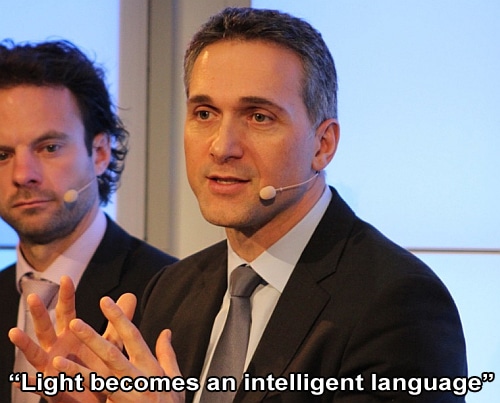
I have mixed feelings about this subject, but it’s important to spread the news about what’s going down and how it’s gonna go down with respect to this incandescent phase-out happening in our time. Sylvania has an awesome guide to this phase-out, showing the whats and the whens of this thing. Check it out here. Also, Sylvania’s website has a link to some of the political and law items of this phase-out. It’s worth a look.
Click on the image, it opens up full-size. Also, check out the PDF from whence it came.
Lemme just ask you this: knowing what we know about how the government is handling things right now, do we really want them messing in what we use to see?





Actually, yes. This is why we have a government. If older grossly inefficient light sources aren’t phased out, how are we ever going to make progress?
Mostly, I agree with you – but I fear the EISA was handled much like the latest SOPA legislation, with the parties having the most money making decisions. I do not disagree about needing to phase out the older, more inefficient light sources, but politicians and lobbyists shouldn’t be making these decisions. Lighting designers, lighting scientists, illuminating engineers, and the like should have a bigger hand in how this goes. It’s deeper than just selling LED lamps.
There is a quality of light from the older incandescent sources that you don’t get with most of the modern sources. Â I am an (aspiring) lighting designer but have also been involved in some quirky architectural projects – some using LED and Fluorescent sources and others like the image attached (my dining table, yes I got a little carried away) which rely on the filament of the lamp and the variable colour temperature as a character of the design itself. Â Â
Arguably the change in colour temperature as a light dims is actually a flaw and, technically, LED sources with their fixed colour temperature are ‘better’ in a strictly technical sense but on the other hand we have LED designers trying to build variable colour temperature systems so that their modern lamps mimic this ‘flaw’ in the old.Personally, I dread the day that the lovely 20W and 40W SBC filament lamps used in that are no longer available just because someone in power in Europe said so.. nothing LED comes close to replacing it, same goes for period drama use (be it on stage or on screen) – how do we create a practical that accurately replicates a fitting from the 30s or 50s using LED or CFL technology ? For general purpose lighting LED and CFL are more efficient – yes, but the quality of light is completely different and whilst ‘good enough’ for some purposes – utility lighting / commercial premises / even colour washes on the stage from products like the PL3 or the Selador range it’s still not right for everything – not yet anyway.As Jim says above – the people who should be making these decisions and driving the move to more efficient fixtures are designers and engineers, not governments, and we should always have the option to choose the ‘less efficient’ path when it’s what the designer wants or the production demands.
There is a quality of light from the older incandescent sources that you don’t get with most of the modern sources. I am an (aspiring) lighting designer but have also been involved in some quirky architectural projects – some using LED and Fluorescent sources and others like the image attached (my dining table, yes I got a little carried away) which rely on the filament of the lamp and the variable colour temperature as a character of the design itself.
Arguably the change in colour temperature as a light dims is actually a flaw and, technically, LED sources with their fixed colour temperature are ‘better’ in a strictly technical sense but on the other hand we have LED designers trying to build variable colour temperature systems so that their modern lamps mimic this ‘flaw’ in the old.
Personally, I dread the day that the lovely 20W and 40W SBC filament lamps used in that are no longer available just because someone in power in Europe said so.. nothing LED comes close to replacing it, same goes for period drama use (be it on stage or on screen) – how do we create a practical that accurately replicates a fitting from the 30s or 50s using LED or CFL technology ?
For general purpose lighting LED and CFL are more efficient – yes, but the quality of light is completely different and whilst ‘good enough’ for some purposes – utility lighting / commercial premises / even colour washes on the stage from products like the PL3 or the Selador range it’s still not right for everything – not yet anyway.
As Jim says above – the people who should be making these decisions and driving the move to more efficient fixtures are designers and engineers, not governments, and we should always have the option to choose the ‘less efficient’ path when it’s what the designer wants or the production demands.
Comments are closed.